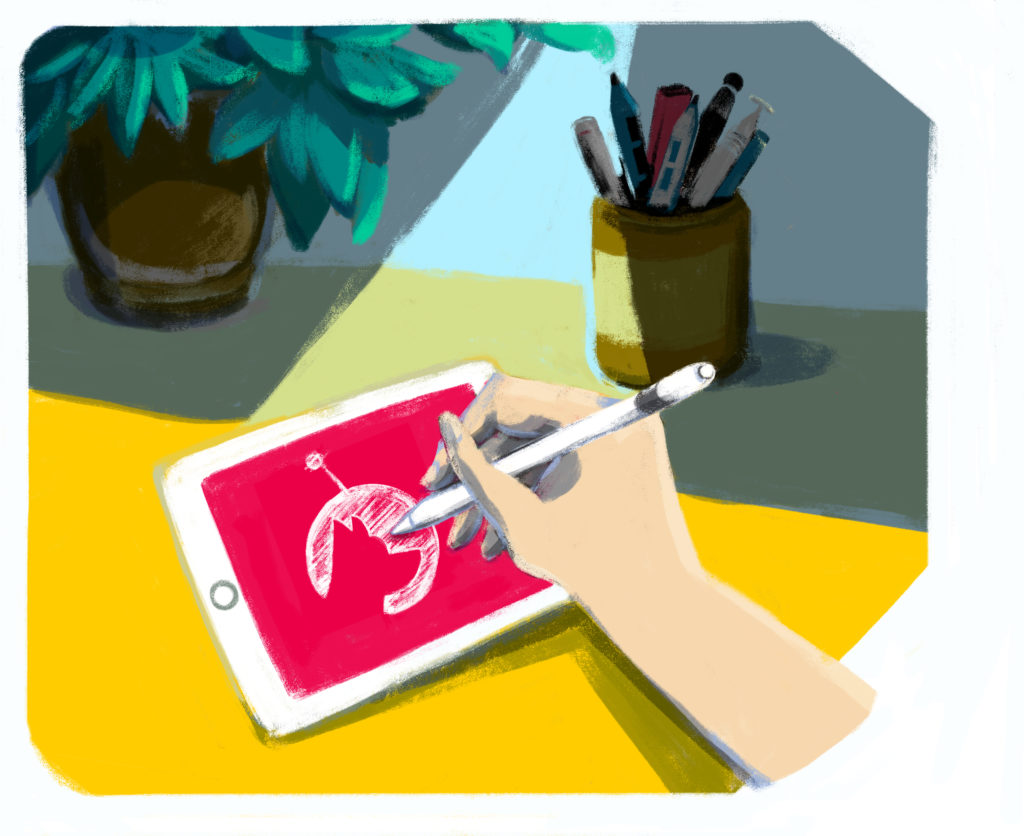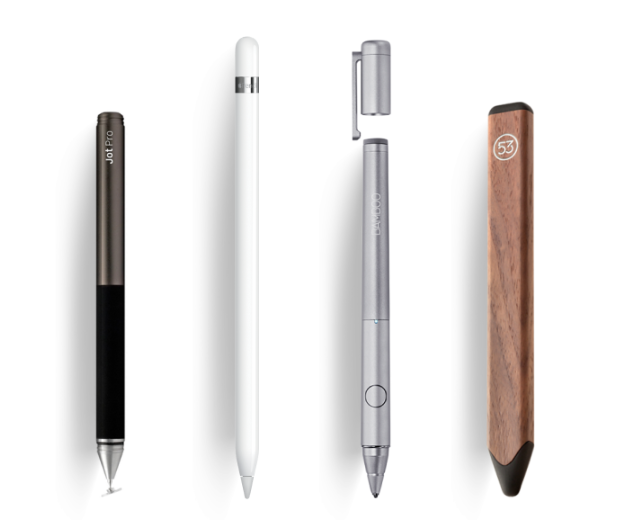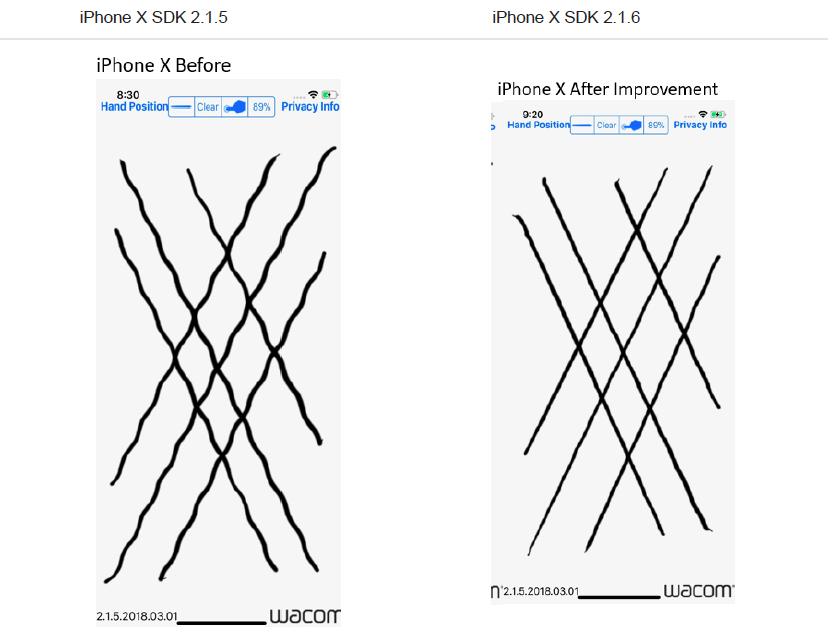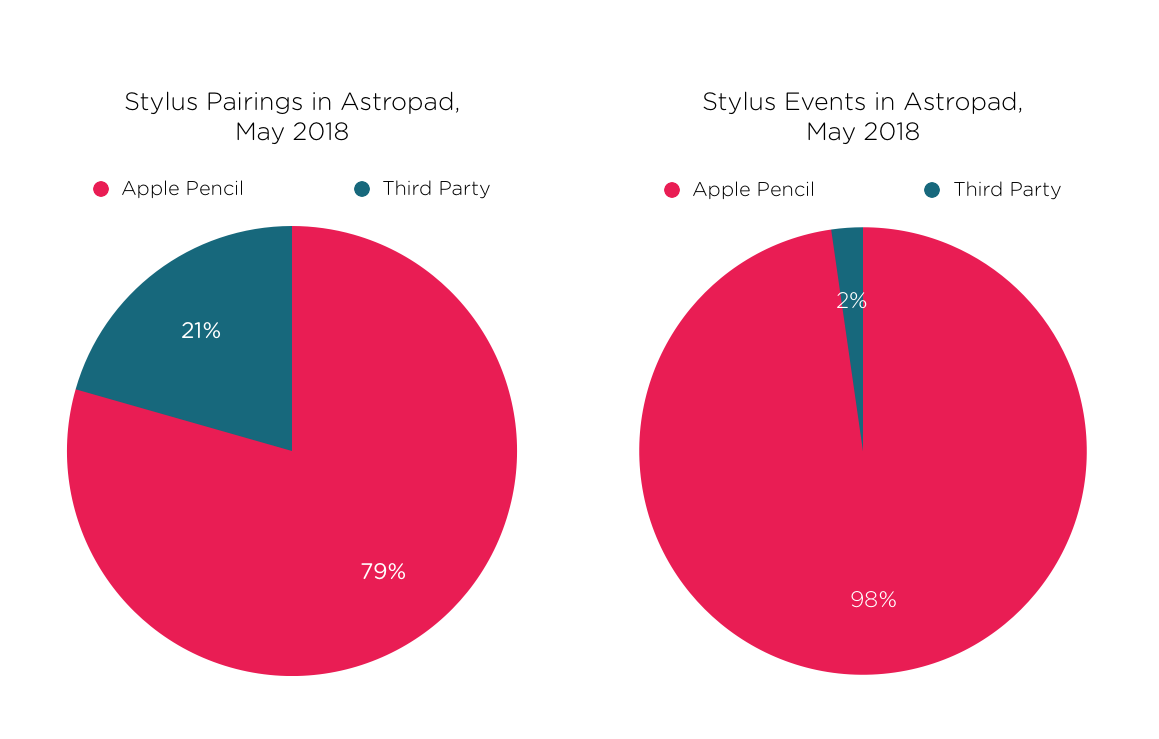
Update: We have discontinued support for third-party styluses
Third-party styluses: we need to talk.
When we first launched Astropad (software that turns your iPad into a graphics tablet for Mac) back in 2015, we wanted to give artists tools to create high-quality digital art anywhere they liked, however they liked.
At the time, the Apple Pencil didn’t exist, so our only choice was to ensure compatibility with nearly every major third-party stylus on the market, such as Wacom, Adonit, Pogo, Hex, and FiftyThree — in total, over twenty different models! But despite extensive stylus testing, we found that there wasn’t a single stylus that met our quality standards for Astropad.
Everything changed in the fall of 2015 with Apple’s announcement of the Apple Pencil. Finally, we had a stylus that was made specifically for the iPad and guaranteed pixel-perfect precision. The Apple Pencil just worked, and it felt like a dream come true for digital artists.
As we refined the Astropad experience in the following years, we found ourselves in a fundamental dilemma: we wanted our users to have the freedom to work with the tools they wanted, but were we willing to compromise the quality of their Astropad experience for that freedom?
To get to the bottom of this, we took a hard look at stylus performance and user analytics to understand how third-party styluses were stacking up against the Apple Pencil.
Third-party performance issues
If the stylus you’re using has performance shortcomings, your overall experience in Astropad isn’t going to be as smooth as we built it to be. In our extensive QA testing, we found that pressure sensitivity in third-party styluses was not as refined as the Apple Pencil. Malyse McKinnon, Astropad’s Director of Artist Relations, notes that these styluses “generally offer limited pressure range, requiring artists to apply far more force than what feels natural for illustration and painting.” From our findings, other shortcomings included inconsistent palm rejection and difficulty pairing with the iPad.
A clear example of these performance issues can be seen with Wacom’s Bamboo Sketch and Bamboo Fineline styluses. In Wacom’s iOS Stylus SDK Release Notes earlier this year, Wacom shared the results of an update that “greatly improves line waviness issues” when using the Bamboo styluses on iPhones. Below are Wacom’s “Before” and “After” shots of their improvements for the iPhone X. You can see that even after the improvements, there is still significant line waviness — an unacceptable flaw for pro digital artists.
Engineering complexities
From a development perspective, Astropad code interacts differently with each third-party stylus brand, presenting unique engineering challenges. Adam Mika, Astropad’s Senior iOS Engineer, explains his frustration that whenever there’s a new iPad or iOS update, “an artist may find that their stylus is completely incompatible with Astropad until the stylus brand updates the stylus SDK. In these situations, it feels like the quality of an Astropad user’s experience is out of our control.”
It was clear on our end that third-party styluses delivered poor performance and extra engineering hurdles for Astropad. But before we did anything drastic, we wanted to know: were digital artists still using these styluses? We dug into our app analytics to look for answers.
The proof is in the app analytics
First, we took a bird’s-eye-view of our stylus history dating back to Astropad’s launch. We’d like to note that we only collect anonymous data in aggregate, and we do not track information from individual users.
In the graph below, you can see a quarterly breakdown of stylus activity — each moment a stylus interacts with the iPad in Astropad — from January 2016 through March 2018. It’s clear from this graph that third-party stylus activity has stagnated compared to the Apple Pencil.
So we know that the number of third-party stylus activity has fallen far behind the Apple Pencil. But we still wanted to know: are die-hard third-party stylus users actually working effectively in Astropad?
To find out, we compared stylus pairings versus stylus activity in Astropad. Stylus pairings indicate styluses that have been initially connected to the iPad and Astropad each month. For example, someone may have paired a Wacom stylus months ago, but if they’re dissatisfied with its performance, they might not use the stylus (triggering stylus activity) in Astropad every month.
In the month of May 2018, 21% of new styluses paired with Astropad were third-party styluses, but third-party styluses make up a mere 2% of stylus events for the month. So, even though people continue to pair their third-party styluses with Astropad, there is an overwhelming preference for Apple Pencil.
Discontinuing Astropad Support for Third-Party Styluses
When we lay out the evidence, here’s what we know: third-party styluses consistently deliver poor performance and create added engineering complexities. On top of that, Astropad users are reaching for the Apple Pencil more and more to create art. Third-party styluses may have once been a cheap way to get a foot in the door for new digital artists, but they no longer make the cut when it comes to quality tools for serious digital artists.
As a company, we’re committed to ensuring the highest-quality experience for Astropad users — and with that commitment, we can no longer honestly recommend third-party styluses for artists at this time. After careful consideration, we have decided to discontinue support for third-party styluses and optimize Astropad for the Apple Pencil.
This change will be rolled out gradually over the coming months, and we plan to completely remove support for these styluses in Astropad Standard by the end of 2018. That being said, we will remain open to supporting future third-party stylus models if they meet our high standards of quality.
We’re excited about this change because it means that we can focus on building the smoothest Astropad experience so that our users can focus on making great art.








